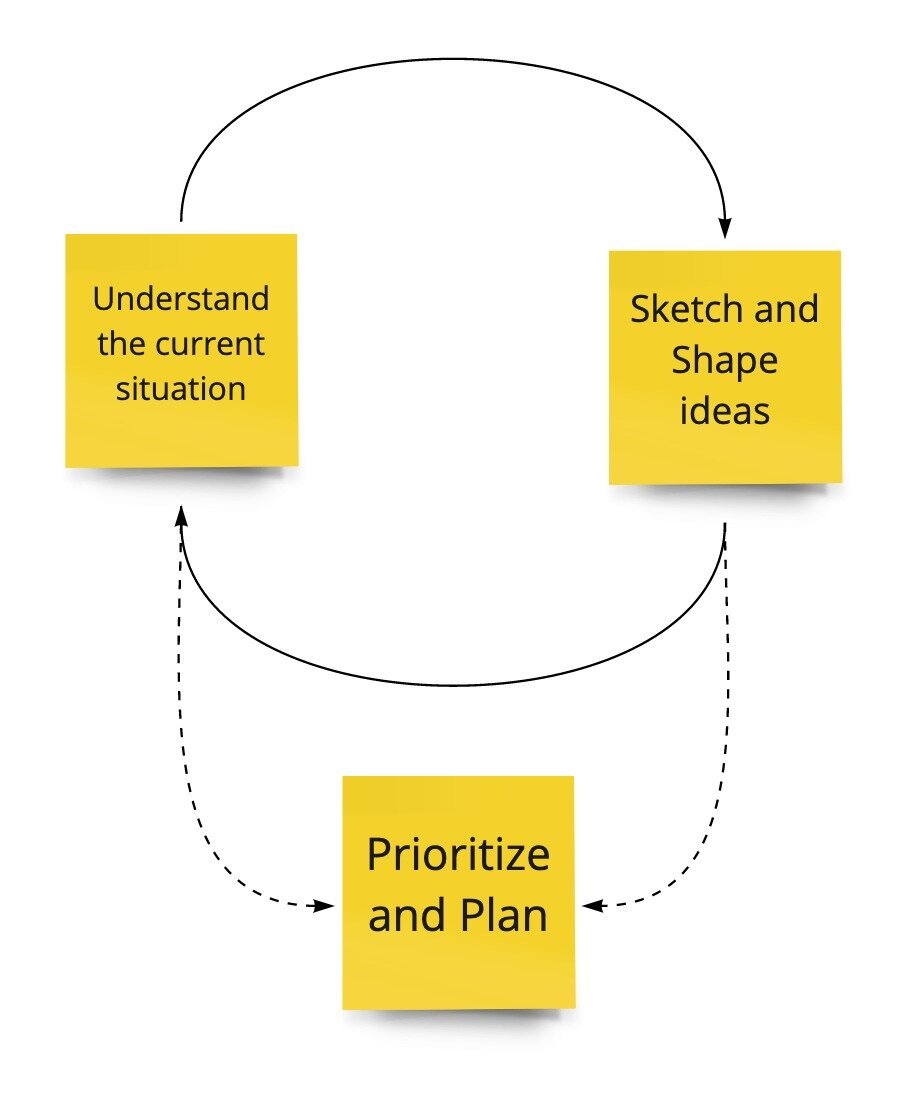Designing and Running a Workshop series: An outline
Every once in a while we get the opportunity to run a series of workshops for a customer with the goal to help them to understand some problems. Often these workshop series are started by the customer, approaching us with some vague ideas of their problem.
Sometimes they even have some potential solution(s) in mind. Nevertheless they want our support in helping them to understand their problems better or they need our input in making potential solutions more concrete.
Usually it's up to us to sketch a rough plan on how we want to approach the customer's need and how we guide them through the journey. This post shares some of the ideas and approaches we take while designing and running these workshops. The first part will focus on how we run and design workshops, while the next part will mention some of the techniques and methods we actually use.
At the moment we run most of our workshops remotely (using Miro as our main workshop tool) but most of the content shared here is also applicable to on-premise and in-person workshops!
Customer need
The example customer from this post offers a service for his clients to issue and manage fuel cards for trucks from different card operators. With these cards the clients can refuel at gas stations with a discounted rate and our customer manages all necessary organisational work for them and handles the payment. For our customer these fuel cards are a kind of ‘loyalty card’ service towards the clients and the customer wants to make sure that the clients have the best possible experience in using them.
The system supporting the card issue and supporting management processes is quite old and technical outdated, so they need to replace it. They want to take this opportunity to not only replace the system, but rethink some of their processes and improve on them.
Our task was to come up with a series of workshops helping them to
Review the current process in managing fuel cards and the application implementing the process and to
Identify ways to modernize and digitalize their processes
Our customer is a big enterprise and at the end they need to get a rough idea about the potential size of an implementation, so they can reserve some budget on their side. (e.g. Are we talking about a 50 day, 300 day or 1000 day effort to modernize the application and its processes?)
Outline for the workshop series
While the customer need and the goal of the workshop series was quite clear, we needed to come up with a plan on how we want to reach these goals. One of the challenges is to create a workshop environment which helps you to think outside of the current application and processes boundaries so you do not accidentally redesign the existing solution!
Our approach was roughly the following:
Understand the current situation
How does the context of fuel cards look like?
What is the current processes?
How is the process currently implemented & how do the applications supporting the process look like?
Sketch and Shape ideas
How can we improve the existing situation?
What needs to be changed? What should stay the same? What could be potential future goals?
Prioritize and Plan
What’s the most business critical part?
How can a roadmap towards a potential solution look like?
With 1) we make sure that we fully understand and visualize the existing situation and get as much context about it as possible. E.g. We want to make sure to understand relevant partners, users and activities of fuel cards and we want to understand the value propositions of fuel cards towards the clients of our customers. Once we have a feeling that we understand the process good enough we look at the applications which implement it.
As second step we use our visualizations from the previous step to identify opportunities and ideas to improve or change the process. In several iterations we will refine some of the ideas and identify aspects and goals of a new system.
As last step we try to identify the most critical parts of the process and sketch a prioritized roadmap for designing and implementing a solution.
The next step(s)…
Now we have a rough idea on how to run the workshop series and the goals we want to reach. The next step is to get an idea of the methods we want to use in the workshop series and start to prepare a new Miro board!

